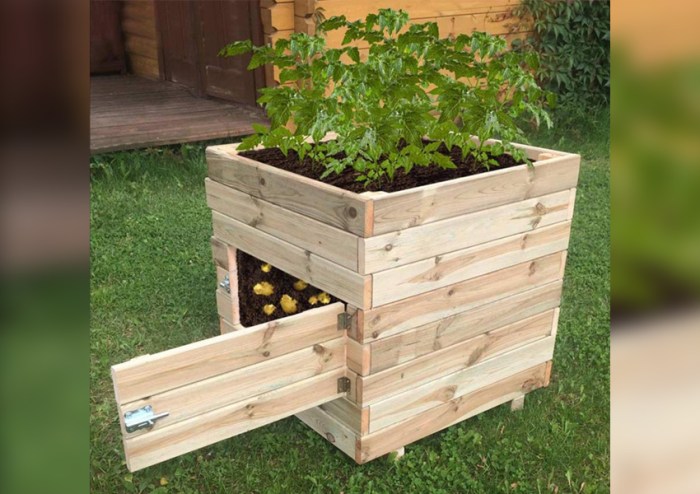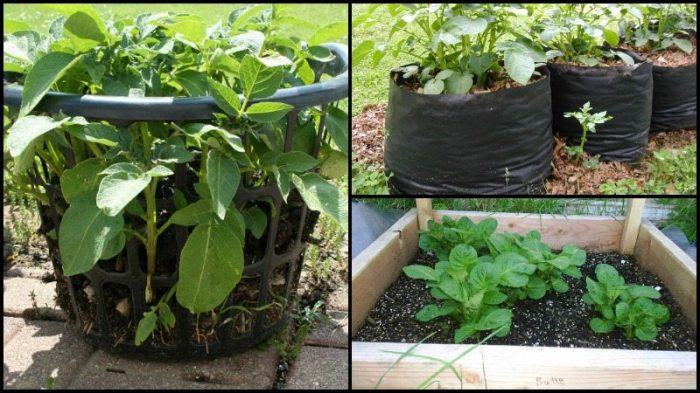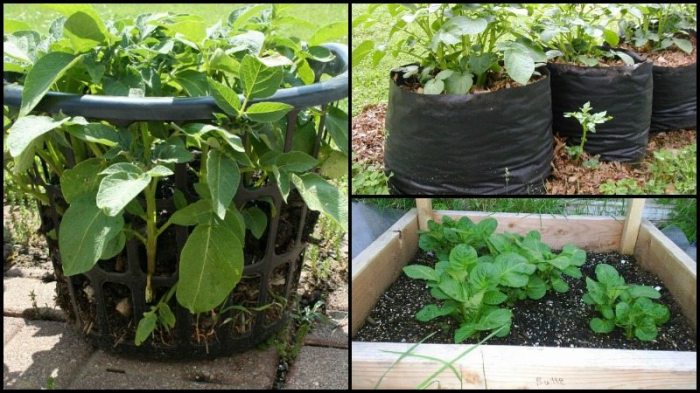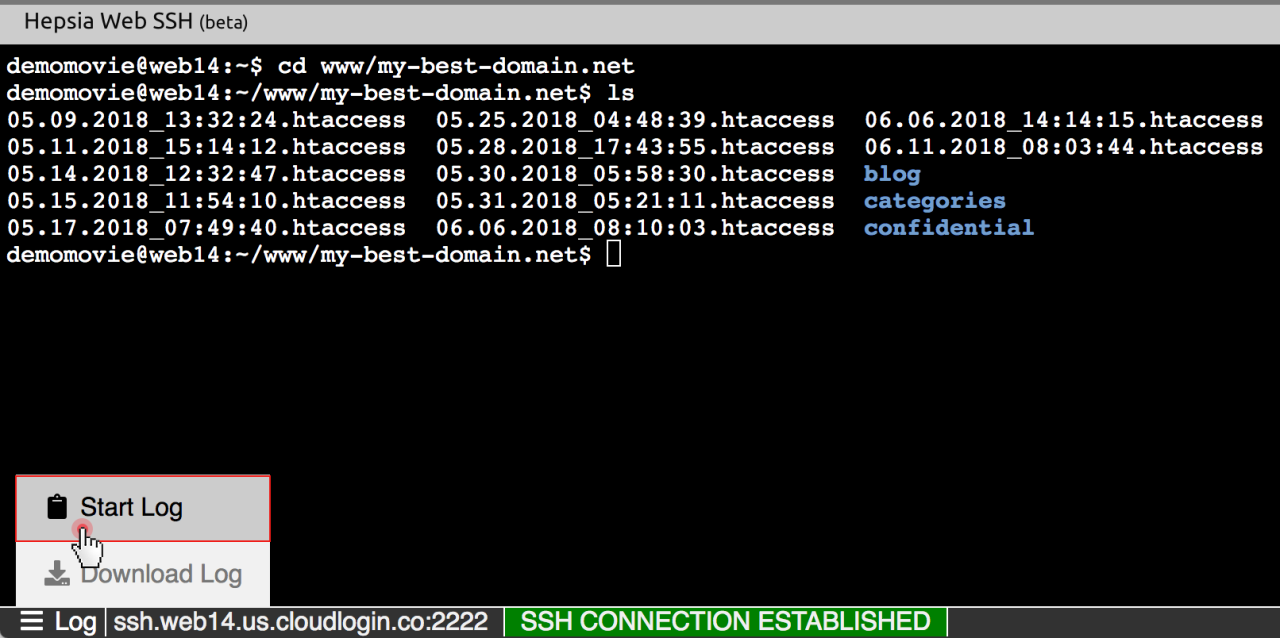DIY potato planters offer a rewarding and creative way to grow your own delicious potatoes. From simple containers to elaborate vertical gardens, there’s a DIY potato planter for every space and style. Whether you’re looking to save money, enjoy fresh produce, or simply add a touch of greenery to your home, a DIY potato planter is a great way to get started.
This guide will explore the world of DIY potato planters, covering everything from choosing the right materials and designs to planting, caring for, and harvesting your potatoes. We’ll delve into the benefits of growing potatoes in DIY planters, share tips for maximizing yield, and provide creative ideas for upcycling everyday items into functional planters.
Choosing the Right Materials

Choosing the right materials for your DIY potato planter is crucial to its success. The material you choose will affect the planter’s durability, aesthetics, and even the growth of your potatoes. Let’s explore some popular options and their pros and cons.
Types of Materials
The type of material you choose for your potato planter will depend on your budget, the size of your garden, and your personal preferences. Here are some of the most common materials used for DIY potato planters:
- Wood: Wood is a classic material for potato planters. It’s durable, aesthetically pleasing, and can be easily customized. However, wood can be expensive, and it requires regular maintenance to prevent rot and insect infestation.
- Plastic: Plastic is a budget-friendly and lightweight option. It’s also easy to clean and resists rot and insects. However, plastic can be less durable than wood, and it’s not as aesthetically pleasing.
- Recycled Containers: Using recycled containers like old barrels, buckets, or even plastic tubs can be a great way to create a potato planter while reducing waste. They offer the same benefits as plastic but with the added bonus of being eco-friendly.
- Fabric: Fabric planters, like grow bags, are a lightweight and portable option. They are also breathable, which can help to prevent soil compaction and improve drainage. However, fabric planters can be prone to tearing, and they may not be as durable as other materials.
Material Recommendations
- For a budget-friendly option: Plastic or recycled containers are excellent choices. They are readily available and affordable, making them perfect for those on a tight budget.
- For durability and longevity: Wood is a great choice. While it may be more expensive upfront, it will last for years with proper care and maintenance.
- For aesthetics and ease of use: Fabric planters offer a unique look and are easy to move around. They are a good option for those who want a more decorative planter.
Design Ideas for DIY Potato Planters

There are numerous creative and practical DIY potato planter designs that can be easily constructed at home. These planters offer a unique way to grow potatoes and add a touch of rustic charm to your garden. Here are some ideas to inspire your next DIY project.
Vertical Planters
Vertical planters are an excellent option for maximizing space, especially in small gardens or on patios. They are easy to build and can be made from a variety of materials, including wood, pallets, and recycled containers.
Here are some steps involved in building a vertical potato planter:
- Choose your container: Select a container that is at least 12 inches deep and wide enough to accommodate the potato plants. You can use a wooden box, a plastic tote, or even a recycled plastic barrel.
- Create drainage holes: Drill several drainage holes in the bottom of your container to prevent waterlogging.
- Fill the container with soil: Use a well-draining potting mix and fill the container to about 6 inches from the top.
- Plant your potatoes: Plant your potato seed pieces or tubers about 6 inches deep, leaving about 12 inches between each plant.
- Add more soil as the plants grow: As the plants grow, add more soil around the base of the stems to encourage new growth.
Diagram:
[Imagine a diagram of a vertical potato planter made from a wooden box, with the box being divided into sections, each section containing a potato plant. The box is mounted vertically on a wall or fence.]
Raised Beds
Raised beds are a great way to create a dedicated space for your potatoes, allowing for better drainage and soil control. They can be built from various materials, such as wood, bricks, or stones.
Here are the steps for building a raised bed potato planter:
- Determine the size: Decide on the dimensions of your raised bed, considering the space available and the number of potato plants you want to grow.
- Prepare the materials: Gather the necessary materials, such as wood planks, screws, and soil.
- Assemble the frame: Cut and assemble the wood planks to form the frame of your raised bed. Securely fasten the planks together using screws.
- Add a layer of drainage material: Place a layer of gravel or rocks at the bottom of the raised bed for drainage.
- Fill with soil: Fill the raised bed with a rich potting mix, leaving a few inches of space at the top.
- Plant your potatoes: Plant your potato seed pieces or tubers about 6 inches deep, leaving about 12 inches between each plant.
Diagram:
[Imagine a diagram of a rectangular raised bed made from wooden planks, with the bed being filled with soil and potato plants growing in rows.]
Hanging Planters
Hanging planters are a space-saving and visually appealing option for growing potatoes. They can be made from a variety of materials, including burlap sacks, wire baskets, and old tires.
Here are the steps for creating a hanging potato planter:
- Choose your container: Select a container that is at least 12 inches deep and wide enough to accommodate the potato plants. You can use a burlap sack, a wire basket, or even an old tire.
- Create drainage holes: If necessary, drill several drainage holes in the bottom of your container.
- Fill the container with soil: Use a well-draining potting mix and fill the container to about 6 inches from the top.
- Plant your potatoes: Plant your potato seed pieces or tubers about 6 inches deep.
- Hang your planter: Securely hang your planter from a hook or support.
Diagram:
[Imagine a diagram of a hanging potato planter made from a burlap sack, with the sack being filled with soil and a potato plant growing inside. The sack is hung from a hook attached to a ceiling or a tree branch.]
Planting Potatoes in DIY Planters
Planting potatoes in DIY planters is a rewarding experience, allowing you to grow your own fresh produce in a controlled environment. To ensure successful potato growth, it’s crucial to understand the ideal soil conditions and proper planting techniques.
Soil Requirements for Growing Potatoes
Potatoes thrive in well-drained, loose soil that is rich in organic matter. The ideal soil pH for potatoes is between 5.5 and 6.5, which can be achieved by adding compost or other organic amendments. Avoid planting potatoes in heavy clay soils, as they can become waterlogged and suffocate the roots.
Planting Techniques for Different Potato Varieties
The planting techniques for potatoes vary depending on the variety.
- Seed Potatoes: These are whole potatoes with at least one “eye” (bud) that will sprout. Cut seed potatoes into pieces, ensuring each piece has at least one eye. Let the cut pieces dry for a few hours before planting. Plant the seed potatoes about 4-6 inches deep, depending on the size of the piece.
- Certified Seed Potatoes: These are disease-free potatoes that are specifically bred for planting. Certified seed potatoes are usually smaller than seed potatoes and can be planted whole. Plant certified seed potatoes about 4-6 inches deep, depending on the size of the potato.
Spacing and Depth for Planting Potatoes
Proper spacing and depth are essential for potato growth.
- Spacing: Potatoes need adequate space to grow and develop their tubers. Space potato plants 12-18 inches apart in rows that are 2-3 feet apart.
- Depth: The depth at which you plant potatoes depends on the variety and the climate. In general, plant potatoes 4-6 inches deep in cool climates and 6-8 inches deep in warm climates.
Upcycling Materials for DIY Potato Planters
Upcycling materials is a fantastic way to create unique and eco-friendly potato planters. You can transform everyday items into functional and stylish containers, giving them a new life while reducing waste.
Repurposing old materials not only saves you money but also reduces the demand for new resources, contributing to a more sustainable gardening practice. With a little creativity, you can turn old tires, barrels, and even furniture into beautiful and practical potato planters.
Creating a DIY potato planter is a fun and rewarding project, especially if you’re looking for a way to add some greenery to your home. It’s a great way to get your hands dirty and learn about the basics of gardening. If you’re feeling extra creative, you could even try painting your planter with vibrant colors, similar to the way you might DIY paint a car to give it a unique look.
Once your planter is finished, you can enjoy watching your potatoes grow and thrive.
Examples of Upcycled Materials for Potato Planters
There are many items around your home and community that can be repurposed into potato planters. Here are a few examples:
- Tires: Old tires are a classic choice for potato planters. They provide excellent drainage and are durable enough to withstand the elements.
- Barrels: Wooden barrels, especially those that once held wine or other liquids, can be easily transformed into planters. They offer ample space for potatoes and have a rustic charm.
- Plastic Bins: Large plastic bins can be used as planters, especially if you’re looking for a budget-friendly option.
- Old Furniture: Old drawers, cabinets, or even entire pieces of furniture can be repurposed as planters. Just make sure to drill drainage holes in the bottom.
- Metal Troughs: Metal troughs, often used for watering plants, can be repurposed as potato planters. They offer good drainage and a sturdy structure.
- Crates: Wooden crates, especially those made of pallet wood, can be used to create unique and rustic planters.
- Milk Jugs: Cut the top off of milk jugs to create individual planters for growing small potato varieties.
Designing Upcycled Potato Planters
The possibilities are endless when it comes to designing upcycled potato planters. You can get creative and personalize your planters to match your garden’s style. Here are a few ideas:
- Tires: Stack tires vertically to create a tiered planter. You can paint the tires in bright colors or add decorative elements like vines or flowers.
- Barrels: Cut a large opening in the side of a barrel to create a wide planting area. You can stain or paint the barrel to match your garden’s aesthetic.
- Old Furniture: Turn an old dresser into a vertical potato planter by removing the drawers and filling the empty spaces with soil. You can paint the dresser in a vibrant color or add decorative handles.
Transforming Upcycled Materials into Functional Planters
Here’s a step-by-step guide to transforming upcycled materials into functional potato planters:
- Clean and Prepare the Material: Thoroughly clean the material you’ve chosen. Remove any dirt, debris, or residue. For wood, sand down any rough edges.
- Add Drainage Holes: Drill drainage holes in the bottom of the planter to prevent water from pooling. The number and size of the holes will depend on the size and material of your planter.
- Line the Planter (Optional): For some materials, like tires, you may want to line the planter with landscape fabric or a similar material to prevent soil from escaping.
- Fill with Soil: Fill the planter with a good quality potting mix that is specifically designed for potatoes.
- Plant the Potatoes: Plant your potatoes according to the instructions on the seed packet.
Building a Vertical Potato Planter
Vertical potato planters offer a space-saving and efficient way to grow potatoes, especially in smaller gardens or urban areas. They allow for maximum yield in a limited space, and the vertical design makes it easier to manage and harvest your potatoes.
Materials and Tools, Diy potato planter
Choosing the right materials and tools is crucial for building a sturdy and functional vertical potato planter.
- Planter Container: A sturdy, weather-resistant container like a large plastic tub, recycled barrel, or wooden pallet is ideal. Choose a container with drainage holes for proper water flow.
- Growing Medium: A good quality potting mix or a combination of soil, compost, and peat moss provides the necessary nutrients and drainage for potato growth.
- Drainage Material: To prevent waterlogging, add a layer of gravel or pebbles at the bottom of the planter to facilitate drainage.
- Planting Bags or Pots: These are used to hold the potato tubers and allow for easy harvesting.
- Staples or Wire: To secure the planting bags or pots to the planter container.
- Tools: A drill, measuring tape, saw (if using wood), gloves, and a shovel are essential tools for building the planter.
Constructing the Vertical Potato Planter
Here’s a step-by-step guide to building a vertical potato planter:
- Prepare the Container: Clean the container thoroughly and drill drainage holes at the bottom if needed.
- Add Drainage Material: Place a layer of gravel or pebbles at the bottom of the container for drainage.
- Attach Planting Bags or Pots: Secure the planting bags or pots to the container using staples or wire. Position them in rows vertically.
- Fill with Growing Medium: Fill each planting bag or pot with the growing medium, leaving some space at the top for the potato tubers.
- Plant the Potatoes: Place the potato tubers in the planting bags or pots, ensuring the eyes face upwards. Cover the tubers with soil.
- Water and Maintain: Water the planter regularly, keeping the soil moist but not waterlogged. As the potato plants grow, add more soil to the planter to cover the exposed stems.
Creating a Raised Bed Potato Planter
Raised bed potato planters offer a practical and efficient way to grow potatoes in your garden. They provide excellent drainage, improve soil quality, and allow for easier access to your plants.
Advantages of Raised Beds for Growing Potatoes
Raised beds offer numerous advantages for growing potatoes, making them a popular choice among gardeners.
- Improved Drainage: Raised beds ensure good drainage, preventing waterlogging and root rot, which are common problems for potatoes. This is especially important in areas with heavy clay soils.
- Enhanced Soil Quality: You can create a custom soil mix for your potatoes in raised beds, ensuring optimal growing conditions. This allows you to control the soil’s composition, pH level, and nutrient content.
- Easier Access: Raised beds provide easy access to your potato plants, making it convenient for tasks like hilling, weeding, and harvesting. The elevated position also reduces bending and strain on your back.
- Pest and Disease Control: Raised beds can help control pests and diseases by creating a physical barrier between your plants and the soil. This is particularly beneficial for preventing soil-borne diseases.
- Increased Yield: Potatoes grown in raised beds often produce higher yields due to the improved growing conditions and easier access for care.
Building and Filling a Raised Bed Potato Planter
Constructing a raised bed potato planter is a straightforward process that requires basic tools and materials.
- Choose a Location: Select a sunny spot in your garden with well-drained soil. The ideal location should receive at least six hours of sunlight per day.
- Determine the Dimensions: The size of your raised bed will depend on your needs and available space. A typical raised bed for potatoes is 4 feet wide, 8 feet long, and 12 inches deep.
- Gather Materials: You will need lumber (pressure-treated wood is recommended), screws, soil, compost, and fertilizer. For a 4×8 foot bed, you will need approximately 16 linear feet of lumber.
- Assemble the Frame: Cut the lumber to the desired dimensions and assemble the frame using screws. Make sure the corners are square and the frame is sturdy.
- Line the Bed: Line the inside of the raised bed with landscape fabric or a weed barrier to prevent weeds from growing through the soil. This will also help retain moisture.
- Fill the Bed: Fill the raised bed with a mixture of soil, compost, and fertilizer. You can use a pre-mixed potting soil or create your own blend. Ensure the soil is loose and well-drained.
DIY Potato Planter Ideas for Small Spaces
Even with limited space, you can still enjoy a bountiful potato harvest! Growing potatoes in containers is a great way to maximize your yield while minimizing your footprint. These compact and space-saving DIY potato planter designs are perfect for balconies, patios, or even small gardens.
Vertical Potato Planters
Vertical potato planters are a great way to grow potatoes in a small space. They are also very attractive and can add a touch of greenery to your patio or balcony.
- Stacked Tires: Stack old tires vertically and fill them with soil. You can plant potatoes in each tire, and the vines will grow up the sides. This is a very budget-friendly option, and you can paint the tires to match your decor.
- PVC Pipe Planter: Cut PVC pipes into sections and drill holes for drainage. Stack the sections vertically, leaving space between each section. Fill the pipes with soil and plant potatoes. This is a very versatile option, as you can easily adjust the height of the planter to fit your space.
- Hanging Planters: You can find many hanging planters made from materials like fabric or wire. These are perfect for growing potatoes in small spaces. The vines will cascade down, creating a beautiful display. This is a great way to add some vertical interest to your garden.
Space-Saving Raised Beds
Raised beds are a great way to grow potatoes in a small space, and they can be easily customized to fit your needs.
- Small Raised Beds: Build a small raised bed that is just big enough to hold a few potato plants. This is a great option if you have limited space, and you can use a variety of materials to build the bed. You can even use old pallets or wooden crates.
- Stacked Planters: Use stacked planters to grow potatoes. These planters are made of several tiers, and you can plant potatoes in each tier. This is a great way to maximize your yield in a small space.
With a little creativity and effort, you can create a DIY potato planter that fits your needs and preferences. From simple containers to elaborate vertical gardens, the possibilities are endless. So grab your tools, gather your materials, and get ready to enjoy the satisfaction of growing your own delicious potatoes.





